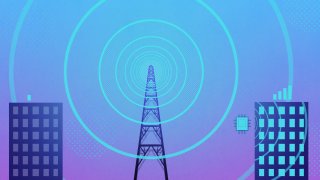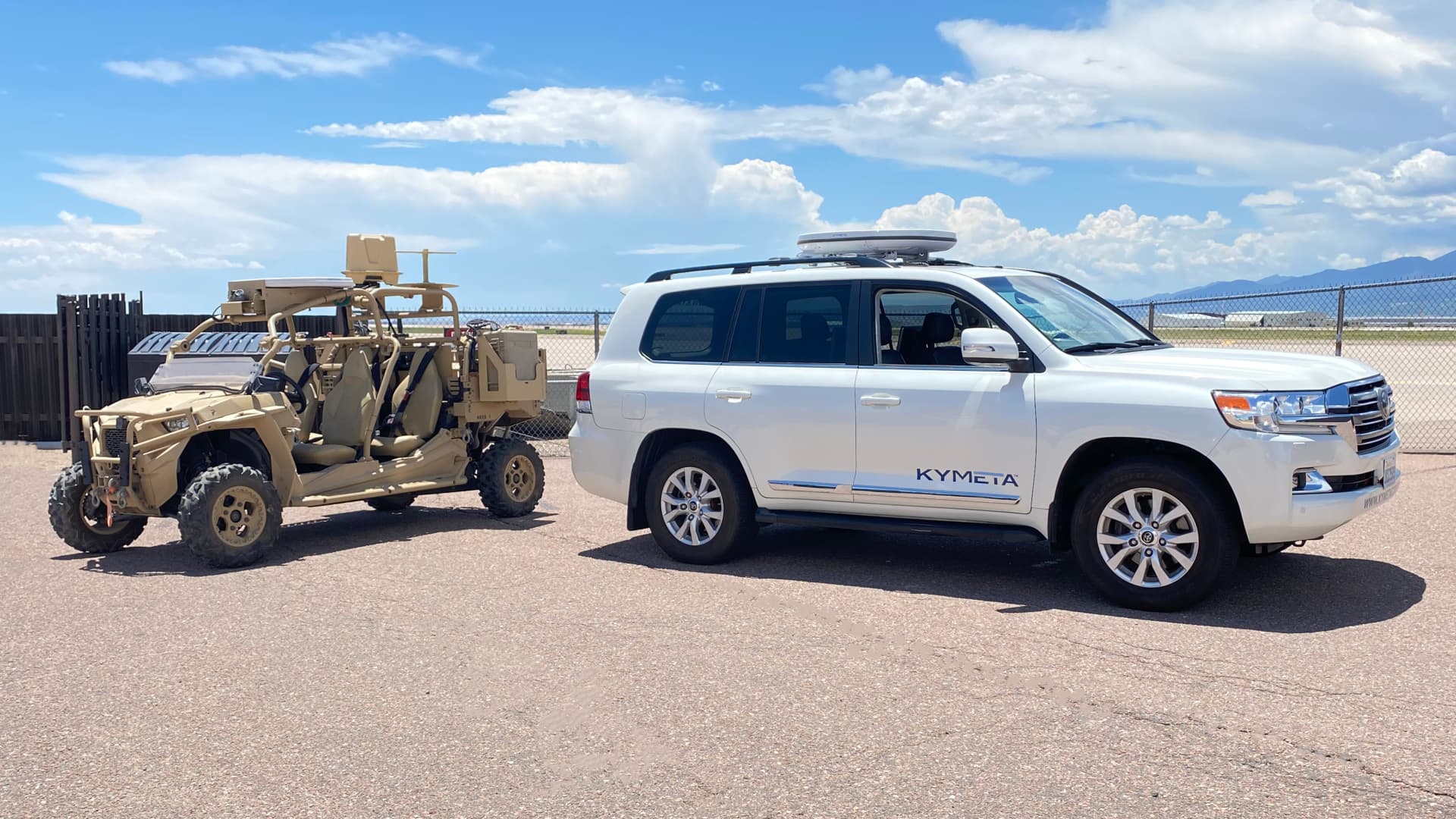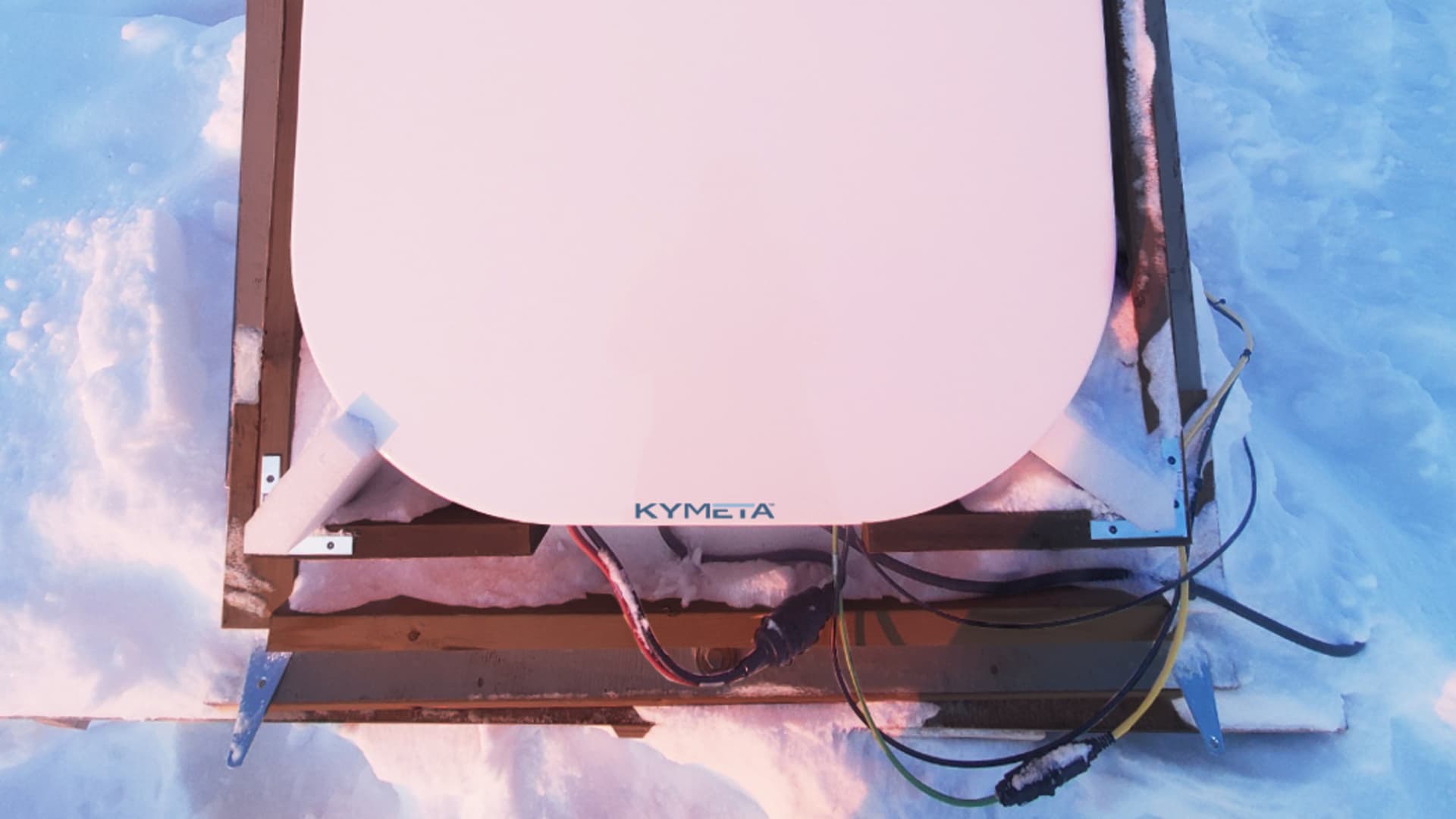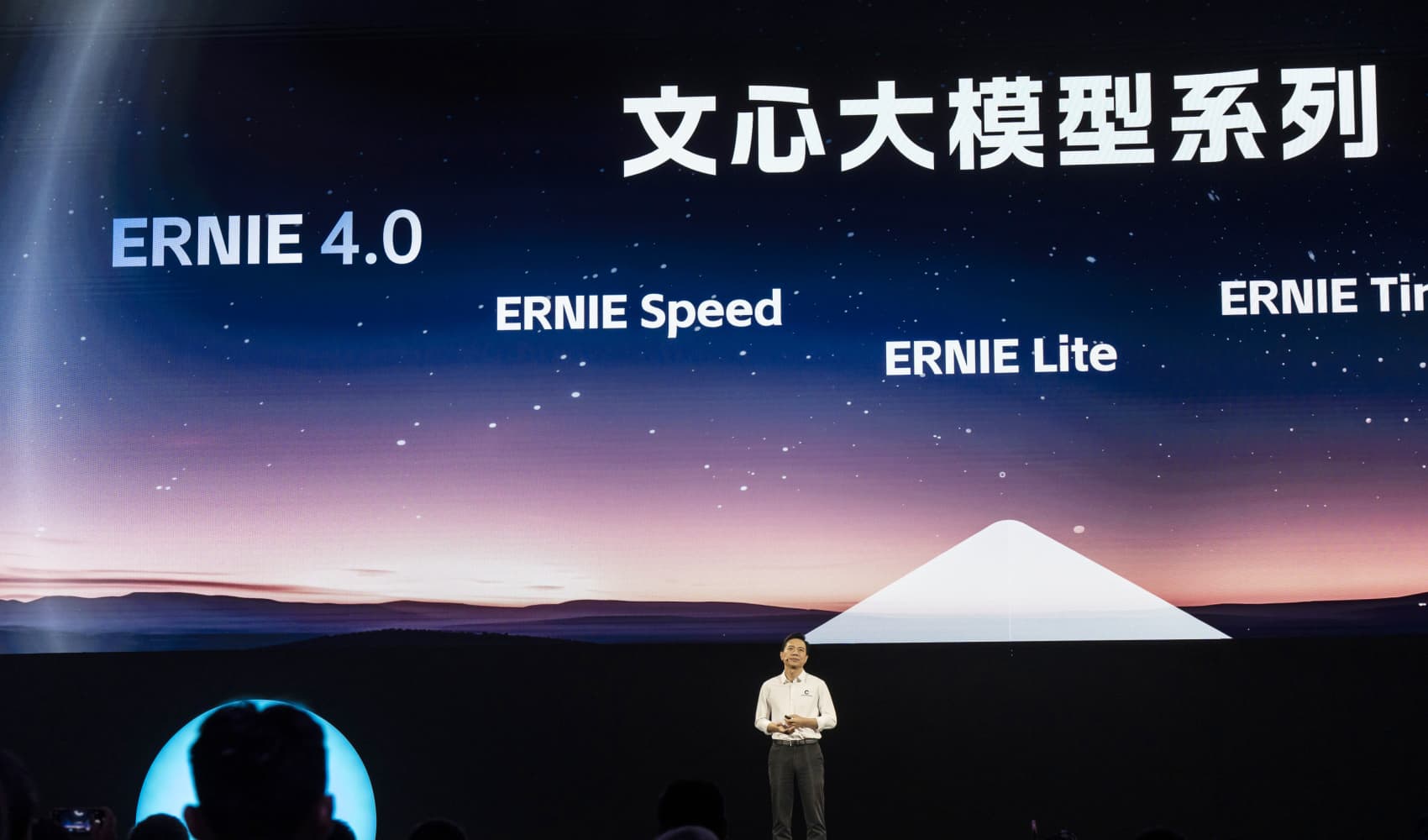
- Bill Gates has been a believer in the promise of low-earth orbit (LEO) satellite internet as a key to global connectivity since the 1990s and a failed bet on Teledesic.
- The private space industry is now booming and Elon Musk's Starlink is among the companies leading a new LEO satellite space race.
- Gates still has a play in space-based communications, Kymeta, a privately held internet antenna technology company founded a decade ago into which Gates just led another $84 million funding round, and which has a deal with Starlink rival OneWeb.

In this weekly series, CNBC takes a look at companies that made the inaugural Disruptor 50 list, 10 years later.
Back in the 1990s, Bill Gates made a big bet on the future of satellite-based connectivity: Teledesic. At the time, when he teamed with another Seattle tech titan, telecom billionaire Craig McCaw, and each invested $5 million, "the pairing was akin to Elvis and the pope on tour together," according to the Seattle Times. But if you have not heard of Teledesic, that is because it failed.
Gates, though, has never given up on investing in the space-based future of connectivity.
Kymeta, a flat panel antenna technology for global satellite and cellular connectivity, was founded roughly one decade ago with Gates as a major investor and has made in-roads in the defense, maritime and aviation sectors. Last week, Gates led another $84 million round of investment in the company.
The engineering design, which uses metamaterial thin film transistors that remove reliance on silicon, is in its second generation and planning to ship its third generation soon. And the use cases are growing, including within the defense industry at a moment in time when NATO is facing the largest threat in Eastern Europe since World War II. From health-care workers in remote settings to forest firefighters, there are multiple real-world scenarios today where the lack of connectivity is directly tied to uncertainty and elevated risks.
Money Report
Kymeta has done health-care trials allowing paramedics to perform surgery in conjunction with a trauma center over satellite-based communication links. Firefighters can see satellite imagery in real-time delivered to their body cameras and, in conjunction with drones, have command and control of water tankers working together in ways never before contemplated.
"For now, and I think in the foreseeable future, we are business to business," says Doug Hutcheson, who joined Kymeta in 2019 as executive chairman and co-CEO after having previously held top executive posts at Leap Wireless and Cricket Communications, as well as within the private equity sector. "Other satellite companies are focused on business to consumer broadband, but our hallmark is communications on the move," he said. "Our antenna can move at 600mph and through rapid turns and dives and communicate with satellites moving at 17,000 miles an hour."
Connected, autonomous Teslas
Kymeta's biggest opportunity of all may be in vehicles.
"There is no question the holy grail for what Kymeta is trying to do is the connected car, things with wheels, the autonomous vehicle we all believe will happen over the next 10 to 20 years," Hutcheson said.
"There are 80 to 90 million cars made a year and about 200 million things that move in the global transportation system, things with wheels, tracks and some form of mobility. That's our addressable market," he said.
Every year, roughly half of cars shipped by automakers like Toyota don't ever again connect to a WiFi or cellular signal. As autonomy and virtualization become more critical, Kymeta is betting that three or four or even five lines of broadband connectivity will be needed as part of building redundancies into keeping control of autonomous vehicles and for the experience of the passenger.
Tesla has already said it will have satellite technology in cars, and Hutcheson said every major manufacturer is trying to solve this technology challenge, especially for when cars moves out of dense urban areas.
"Nothing is better for us than anytime Elon mentions putting satellite tech on a Tesla," he said. "It wakes everyone up and makes everyone realize that is the future."
The private space race
SpaceX's Starlink internet service using its low-earth orbit satellites is part of Musk's vertically integrated business model, from the satellite launched by SpaceX back to the internet service in a Tesla. While Hutcheson didn't rule out one day potentially working with more companies, including Starlink and Amazon Kuiper, Kymeta is independent and currently works with entities from the Department of Defense to Starlink's low-earth orbit (LEO) rival OneWeb, as well as existing geostationary (GEO) satellites.
Switching seamlessly, in micro seconds, between a satellite that is low-earth orbit on the horizon due south to a GEO satellite at the equator or to another satellite constellation — in effect, its antenna able to see "all of what is in the sky and switch in microseconds" — is the goal. And to do it at very fast download speeds.
Eventually, Kymeta's goal is to reach one gigabyte per second of connectivity. Tests it has taken part in with OneWeb have reached download speeds between 100 mbps and 200 mbps, but the current available standard service is slower. Elon Musk has said download speeds for his Starlink service will more than double to 300 mbps from current levels of service.
Kymeta's relationship with OneWeb allows for Kymeta and the satellite company to cross-sell services, but it has become more complicated as OneWeb relied on Russian rockets for its launches and had to sign a recent deal with Starlink, in effect its competitor, amid the economic war between the West and Russia. There are other competitors out there as well which offer mobile and remote connectivity solutions, from Ball Aerospace to ThinKom and L3Harris Technologies, as well as the defense industry giants like Lockheed Martin and Northrop Grumman in the satellite sector.
Hutcheson, who worked from Qualcomm earlier in his career, said Kymeta, if successful, will be like what Qualcomm was to the phone. Consumers don't go out to buy Qualcomm but over the past decade almost everyone who bought a phone bought a Qualcomm chip inside of it. "We don't want to be the brand name on top," he said.
The current private space race is a reason Gates remains focused on the technology.
"That $50 billion of investing going up in space, this is why Bill is so motivated," Hutcheson said.
Even as Teledesic failed, McCaw and Gates realized a fundamental challenge for the future: solving the ground-based user terminal for the future growth of connectivity.
Kymeta, which as an engineering idea is several decades old, was designed around the belief that LEOs would eventually become a dominant form of spaced-based communication. If low-earth orbit combined with legacy GEO satellites was going to be as big as it could in terms of global connectivity, "it needs something able to make it work on earth," Hutcheson said.
"What we are seeing happen now is the foundational basis of what we were created for, and seeing it come to fruition, and I think will see over the next decade as much change as we've seen in last ten years, tenfold more," he added.
Potential for laser-based disruption
For Rich Safran, an analyst at Seaport Global who covers defense and aerospace, there are big technological leaps coming, but he remains unsure on calling a winner from among today's design and engineering. The radio frequency (RF) based approach which underpins the communication networks of today remains at threat of disruption from breakthroughs in laser-based optical communication.
Kymeta's moveable antenna has provided one solution to a geometry challenge, whether it is a ship or airplane on the move, providing the ability to communicate and electronically steer for constant communication. But it isn't alone in doing this, and optical communication could yet replace the approach, with companies including General Atomics and Mynaric developing new, if unproven, ideas.
And as many companies are rushing to put up satellite constellations and communication solutions, Safran worries about a repeat of the boom and bust in the telecom sector of the 1990s.
"What's the difference between this and the 90s, when the entire world was going to higher bandwidth and everyone was trying to build these commercial models," he said.
The government has been investing in laser-based communications technology, and while it is still early days, its interest is a sign that this technology evolution can play out in ways that disadvantage the latest advances in RF technology, ultimately on the commercial side. This doesn't mean that niche markets for companies like Kymeta won't continue to exist, but the world of RF-based connectivity solutions is well populated with solutions that could be competing for a limited set of contracts.
"This is the classic battle of the VHS vs. beta and we haven't found out who will win," Safran said.
Existing, better funded services may have an advantage and in the near-term future, all the solutions will continue to be based on RF. OneWeb and Kymeta may be winners between the number of launches the satellite company is committed to, and Kymeta's funding and equipment orders, but all tech start-up models are "hockey sticks" — with the promise of the exponential growth and money that will be made in the future.
"Nobody has talked about the capture rate and market share and margins. Some are better capitalized than others which gives better odds, but no guarantee," Safran said. "Gates has deep pockets and it is not his first time out so presumably he knows where a lot more of the potholes are to avoid."
Kymeta would not discuss financial information.

For defense analysts, there is an assumption that today's government-funded R&D is tomorrow's production program. That could be the case for laser-based communication, though it remains too early to say. "The good thing about Gates is he does recognize the defense side of this is pretty important, but the question is, how many contracts does he have?" Safran said.
All of this is occurring on a geopolitical landscape that is evolving quickly and leading to de-globalization of relationships. Access to space is going up with the private investment, but there is still going to be nation-state prioritization. North America and Europe will have captive satellite systems and China is launching its own LEO satellites, but Hutcheson says military users and commercial users will want redundancies across systems and massive amounts of traffic that are harder to attack, so the opportunities should reinforce each other.
Major powers are talking about integrating communications in the theatre of war from logistics to what individual troops are doing at a level that requires major communications-based improvements. "What is happening in Ukraine is pretty ugly, but if one thing is clear it is that it only makes this whole space and the transition even more apparent. ... Fully integrated communications where everyone knows what's going on. ... The drive to have that information be there and how it is used will be a key differentiator," Hutcheson said.
He wouldn't discuss any exit strategy for Kymeta, including the potential for an IPO, but on the issue of Bill Gates' involvement to this day, he was clear. "There is a reason it's his name in the press release," Hutcheson said about last week's funding announcement, rather than the name of a Bill Gates investing entity. "He is very knowledge about what's going on."
Sign up for our weekly, original newsletter that goes beyond the annual Disruptor 50 list, offering a closer look at innovative companies like Kymeta that continue to transform every sector of the economy.






